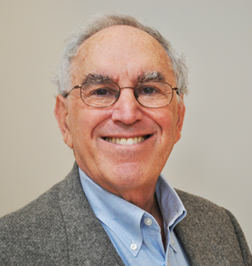Originally published in December 2012 on the Baycrest.org
 A National Post story (Nov. 8) reported that New Brunswick was the latest province to move in the direction of offering patients more choices about end-of life-care, beyond the standard “do or do not resuscitate” policies.
A National Post story (Nov. 8) reported that New Brunswick was the latest province to move in the direction of offering patients more choices about end-of life-care, beyond the standard “do or do not resuscitate” policies.
Fast on the heels of this article was a story in The New York Times (NYT) on Nov. 24 about end-of-life care. The NYT reported that when advance care planning is done well “there is good evidence that…it can greatly increase the likelihood that patients will get the care they really want. And, as a secondary benefit, their choices may help reduce the cost of health care as well.”
What I found surprising about the National Post article was that one would think after reading it that offering dying patients more choices in their end-of-life care was a novel idea. As the NYT article pointed out, the history of so-called advance care planning dates back several decades. Canada has played a strong role historically in the development of the idea of the “living will” – a document used for the process of stating one`s wishes and values for end-of-life care, which can be expressed verbally or in writing. In Ontario it is supported legislatively through the province`s Health Care Consent Act.
The NYT story states, “Many people sign living wills that specify the care they want as death nears and powers of attorney that authorize relatives or trusted surrogates to make decisions if they become incapacitated”. As part of a nation-wide American project, Physician Orders for Life Sustaining Treatment have been created to ensure that a patient’s wishes are followed and not misplaced or too vague for family members to be sure what a comatose patient would want. According to the NYT article: “With these physician orders, the doctor, or in some states a nurse practitioner or physician assistant, leads conversations with patients, family members and surrogates to determine whether a patient with advanced illness wants aggressive life-sustaining treatment, a limited intervention or simply palliative or hospice care.”
With the shift toward giving patients more choices about their end-of-life care beyond do or do not resuscitate, we need to be careful of the real risk of developing a quick and cheap fix – that is, relying on a simple form in which people select from a menu of categories of choices for their final phase of care. This process has been shown by many in the field of ethics and end-of-life care to be too minimalist to capture the nuances and emotional complexities of expressing end-of-life wishes. Many would say the important part of the process is not a “form” that is filled out, but a robust conversation with those that you depend on to respect your values and wishes and interpret the potential treatments offered when the time comes to agree to or reject a treatment.
Pre-planning one’s future is never easy and can lead to unexpected and unwanted consequences if not done with careful thought and planning. The importance of the National Post and NYT stories is that they support the importance of having the conversation with close family members or those you might expect or appoint formally to carry out your wishes when you are no longer able to do so. This personal responsibility must be supported by public policy initiatives that promote education and training of those who ultimately will be responsible for assisting individuals and their families in tackling this challenge.
Dr. Michael Gordon is currently medical program director of Palliative Care at Baycrest, co-director of their ethics program and a professor of Medicine at the University of Toronto. He is a prolific writer with his latest book Late-Stage Dementia: Promoting Comfort, Compassion, and Care and previous two books being Moments that Matter: Cases in Ethical Eldercare followed shortly on his memoir: Brooklyn Beginnings-A Geriatrician’s Odyssey. For more information log on to www.drmichaelgordon.com
